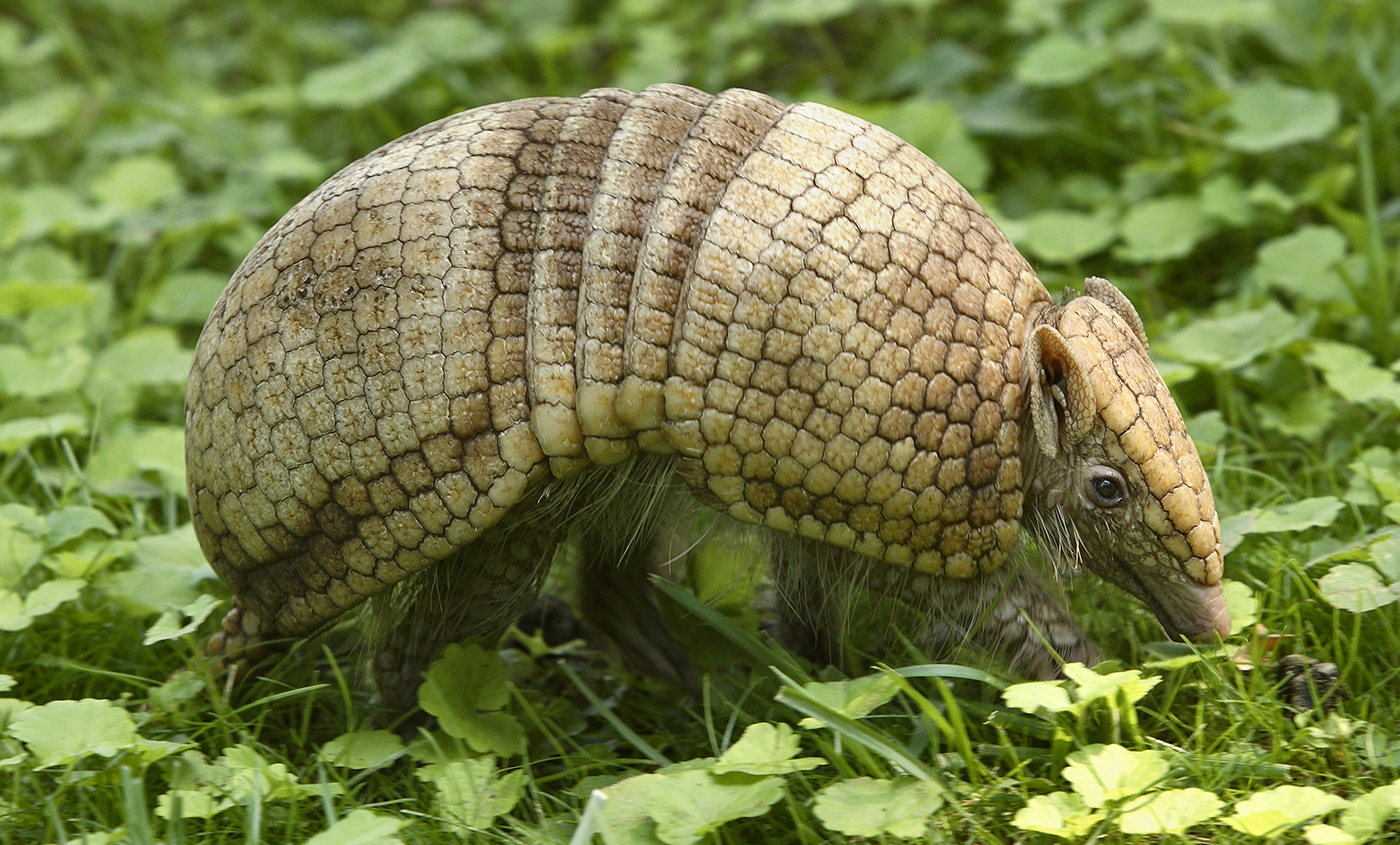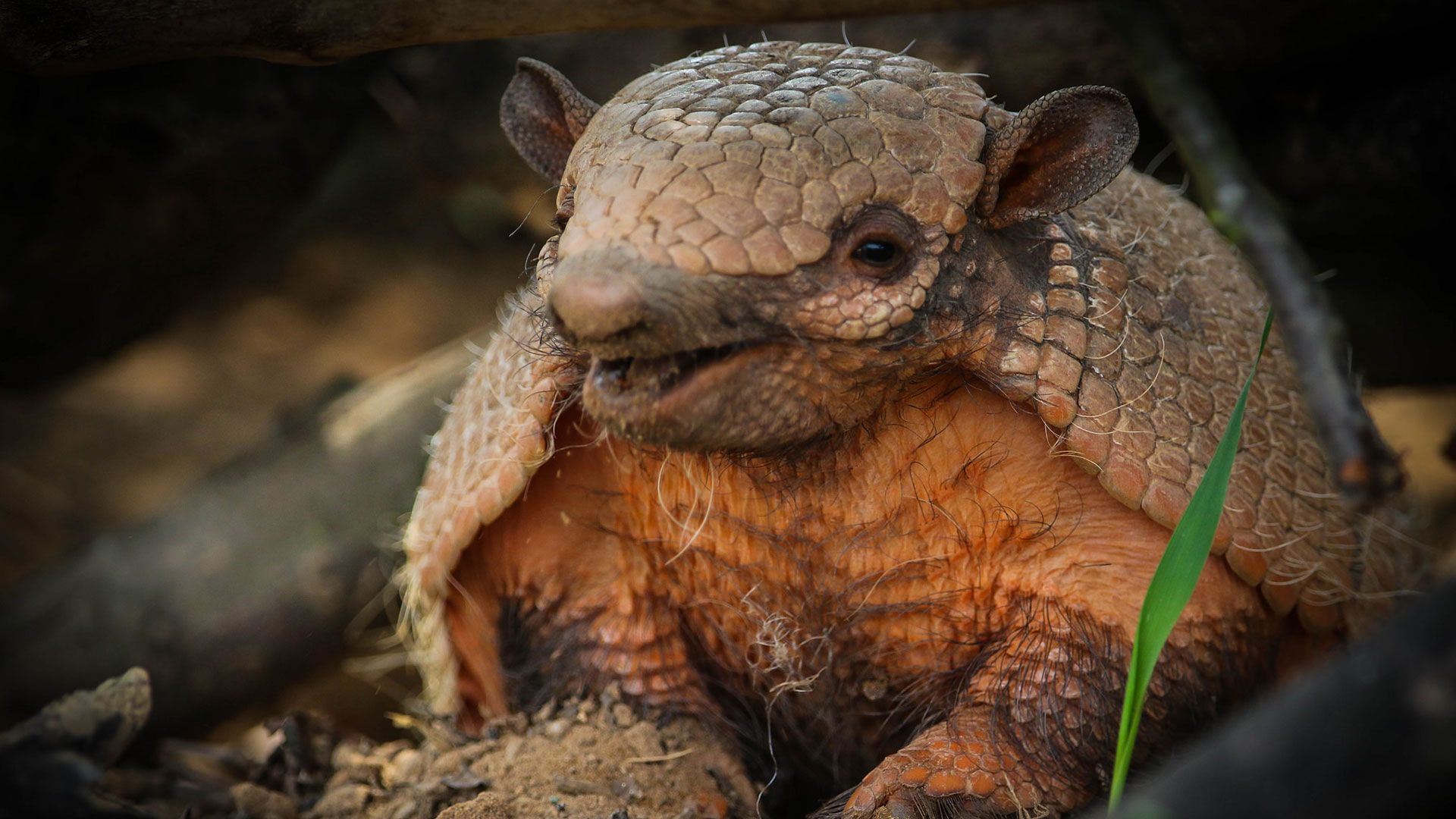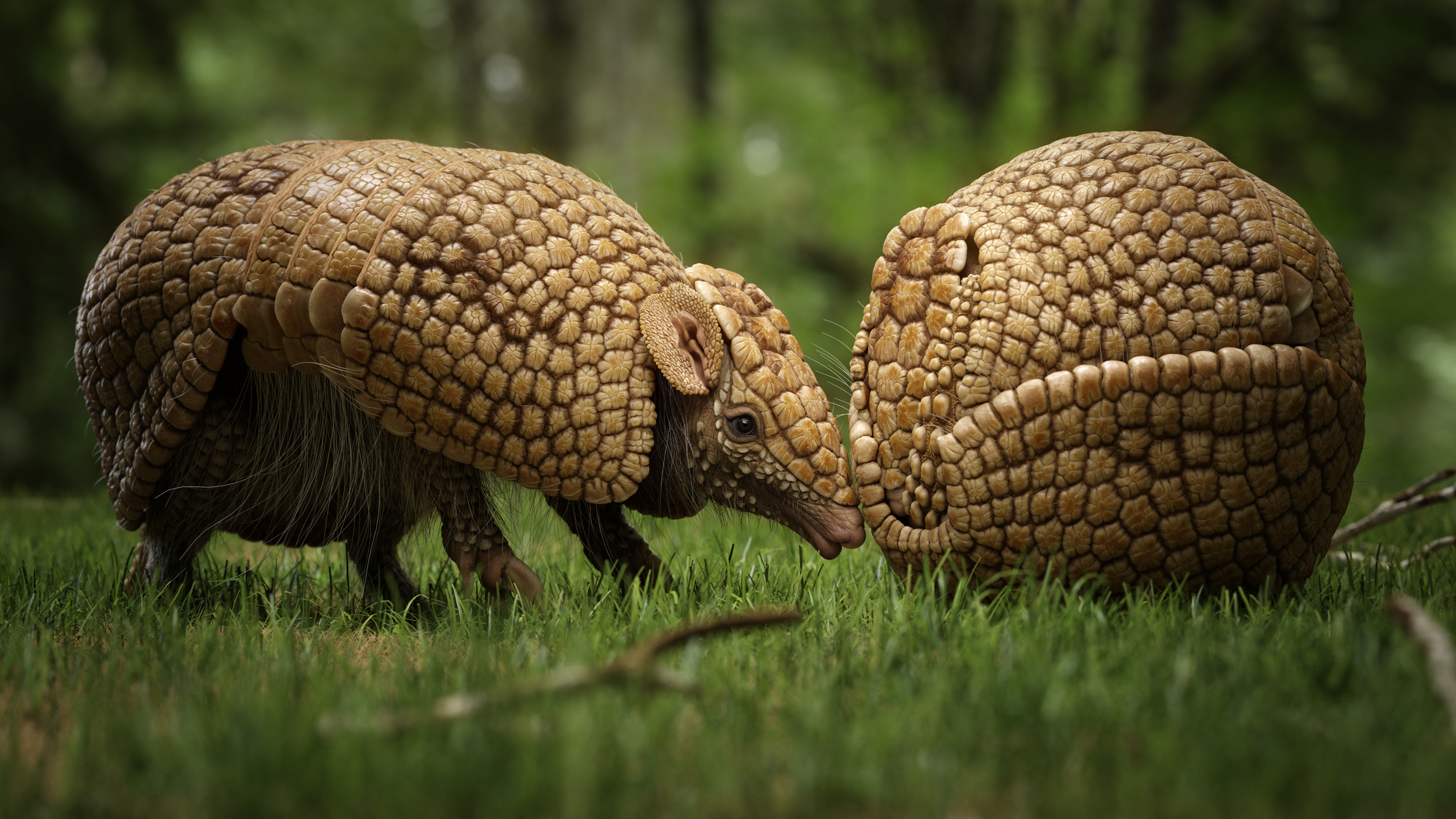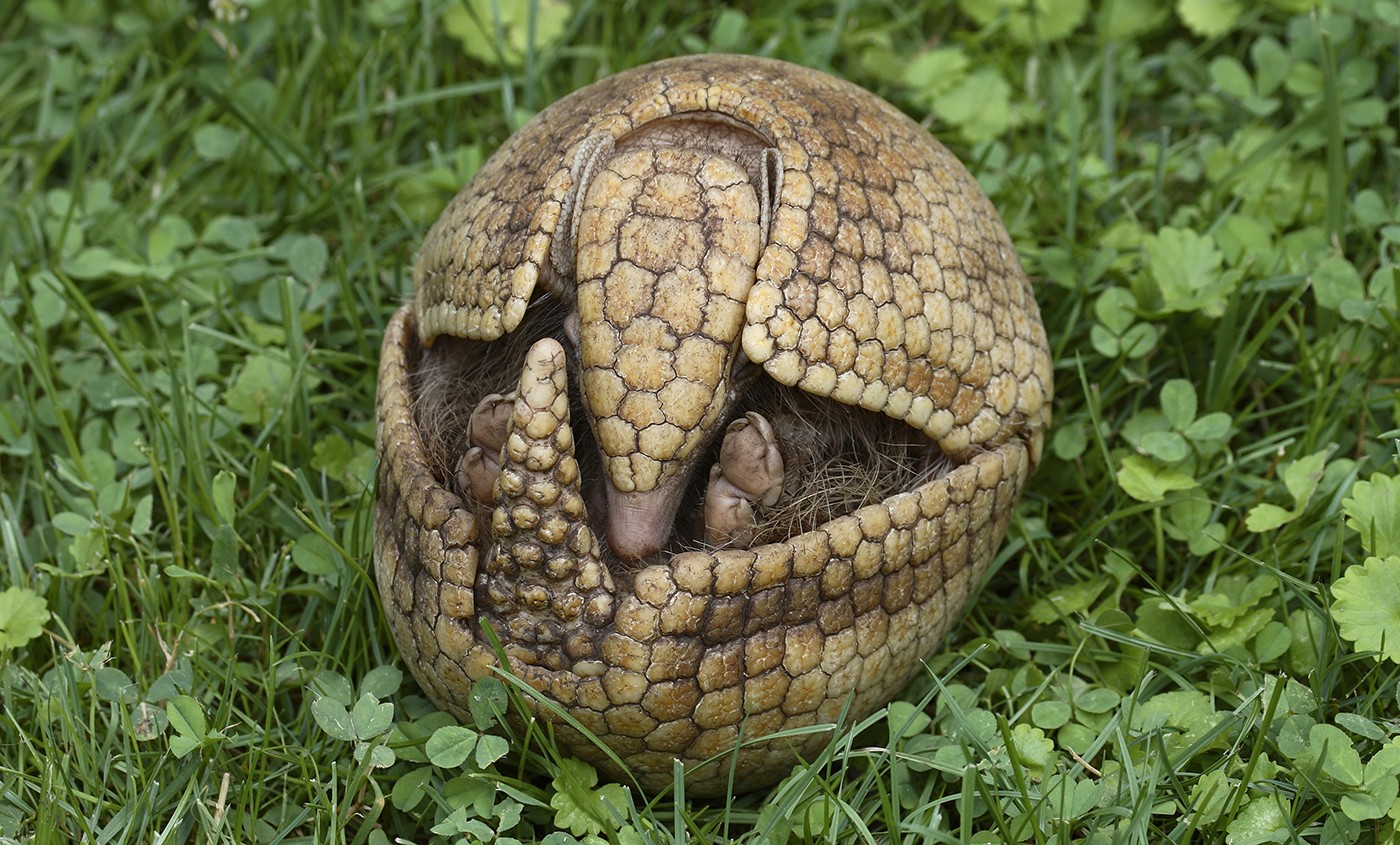STATUS
Near Threatened


Three-banded armadillos are various shades of brown. The hard carapace covering their bodies develops from the skin and is composed of strong, bony plates, called scutes. The tail, top of head and the outer surfaces of the limbs are also usually armored.
When frightened, they will roll up almost all the way until their armor forms a trap that snaps closed on their predator's hand or paw. The shell also helps protect them from the thorny vegetation that armadillos frequently pass through. The under surface is soft, hairy skin. The carapace is not attached to the skin on the two sides, allowing the head, legs and tail to tuck inside when the animal rolls into a ball. This works well against most predators, but unfortunately has made La Plata three-banded armadillos easy prey to human hunters.
The range of La Plata three-banded armadillos includes parts of Bolivia, Brazil, Paraguay and Argentina. They live in open, grassy areas, open forests and marshes. They do not dig burrows like most armadillos, but use the abandoned burrows of anteaters when they can get them.

STATUS
Near Threatened

SCIENTIFIC NAME
Tolypeutes matacus

POPULATION
20-22 species

LENGTH
12-inch (30-centimeter) long

WEIGHT
about 3 pounds (1.5 kilograms)

HABITAT
GRASSLANDS

Armadillos can control pests, disperse seeds, and be effective sentinels of potential disease outbreaks or bioindicators of environmental contaminants.
They experience high morbidity during transit, making collection for the pet trade an even greater threat to their survival. In South America, natives use armadillo carapaces to make musical instruments. These instruments, which are called charongos, are similar to mandolins.
Loss of habitat has been substantial throughout the range of La Plata three-banded armadillos
La Plata three-banded armadillos are the only armadillo to rely heavily on their armor. Some other armadillo species cannot roll up because they have too many plates to curl.
While their defense mechanism of curling into a ball is suitable for protection from natural predators, this makes them particularly susceptible to hunters and poachers, who can simply reach down and pick up the animals.




